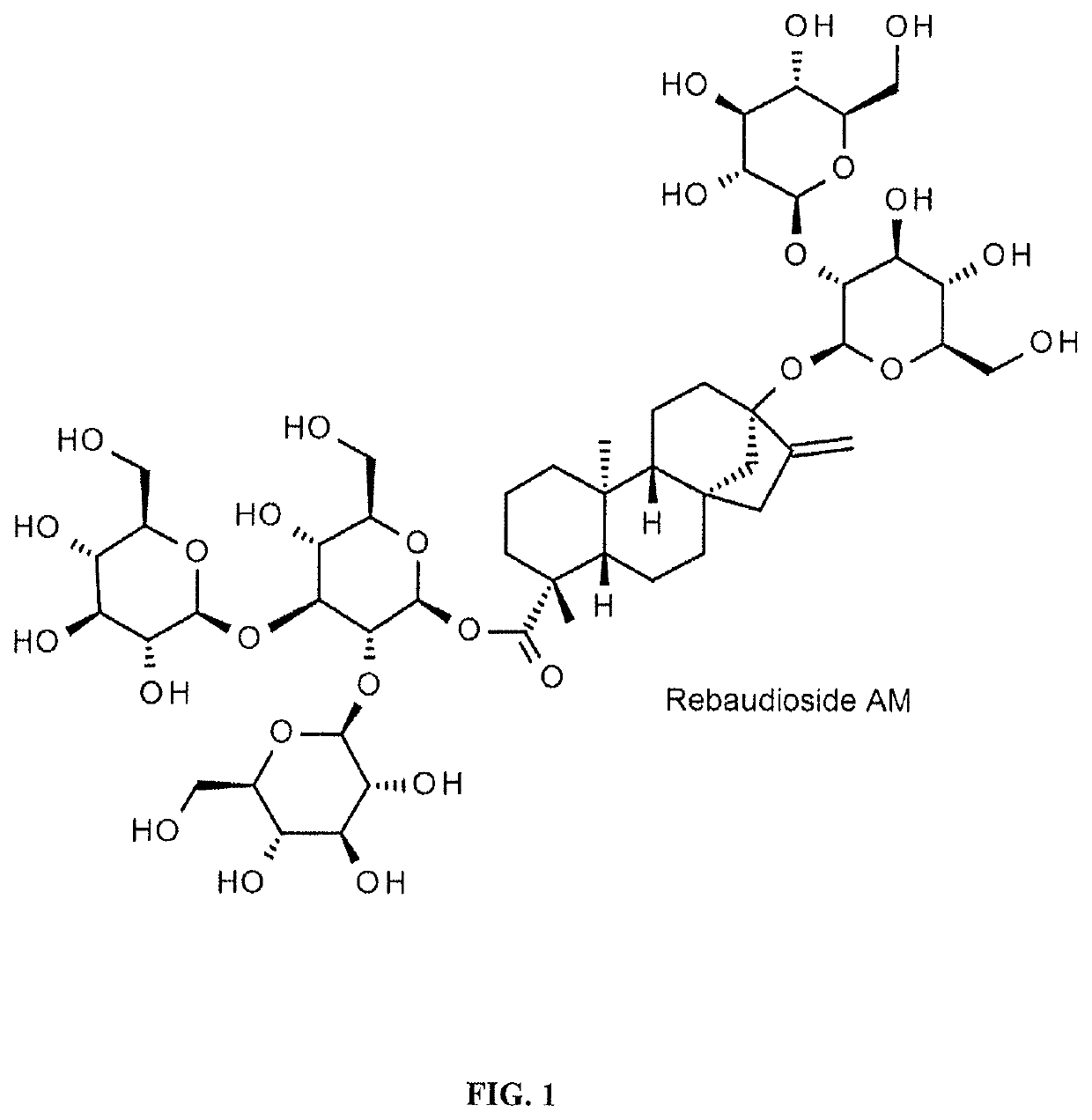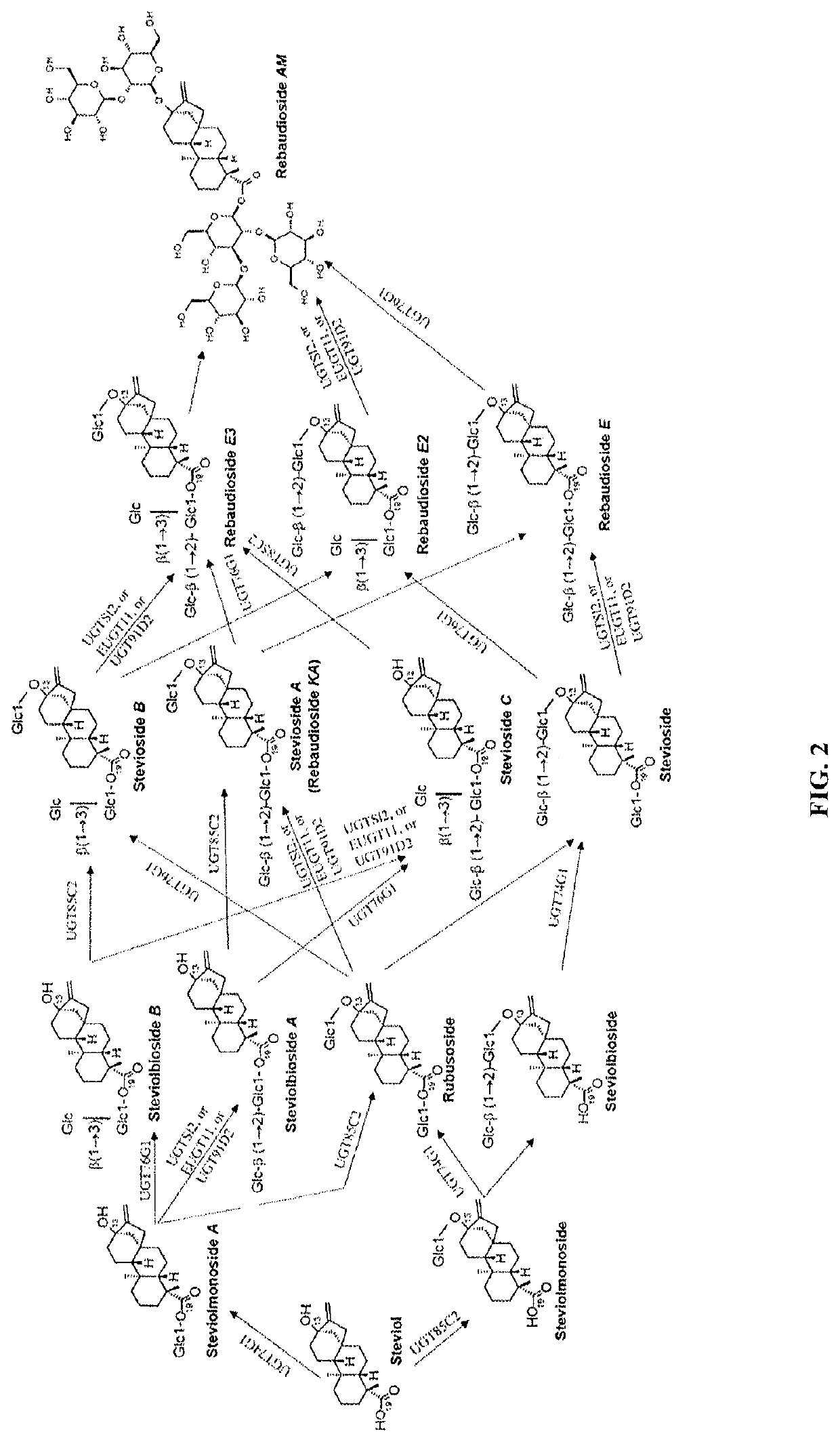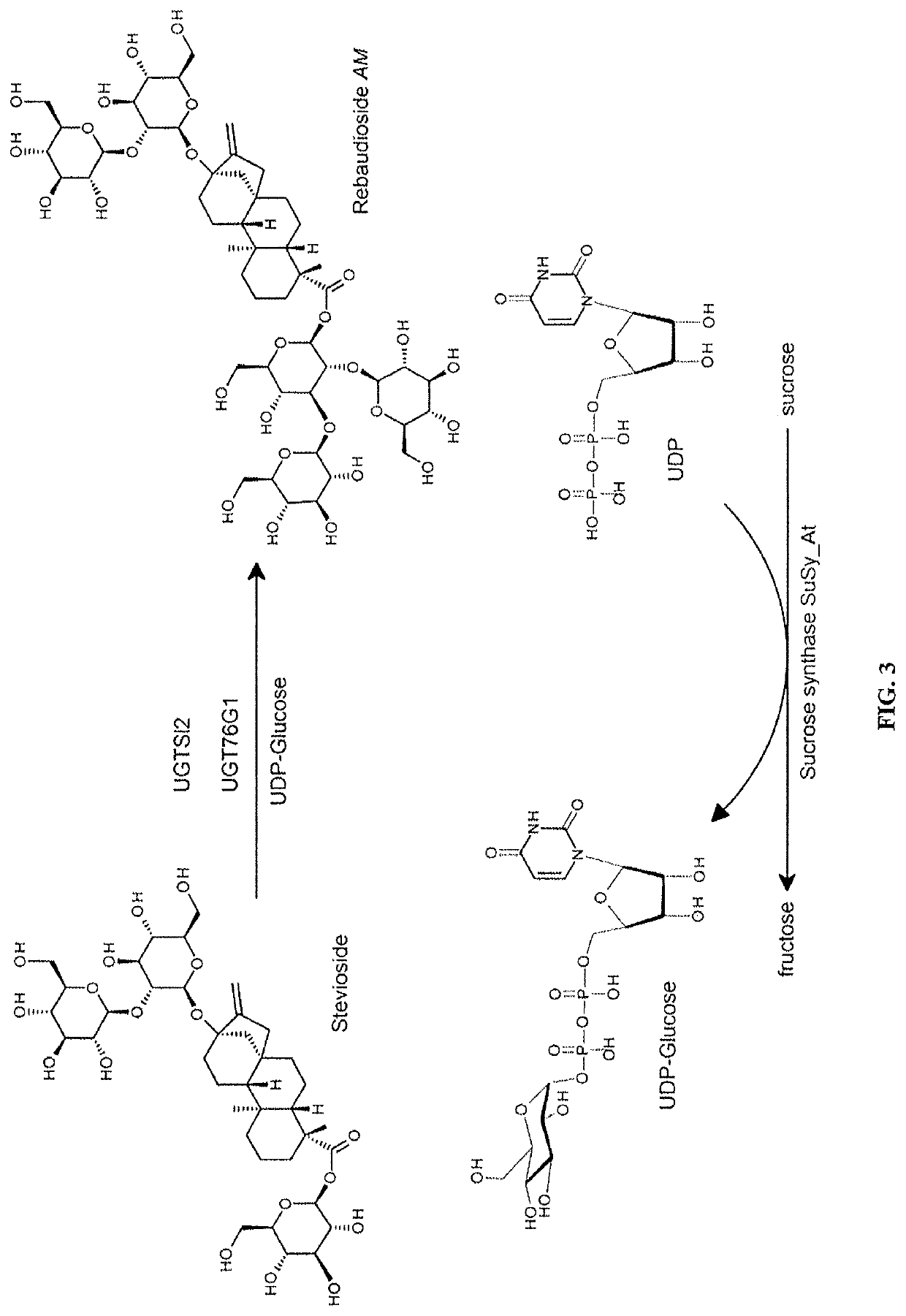High-purity steviol glycosides
a technology of steviol glycosides and steviol, which is applied in the direction of enzymology, sugar derivates, transferases, etc., can solve the problems of many of these methods that are unsuitable for commercial us
- Summary
- Abstract
- Description
- Claims
- Application Information
AI Technical Summary
Benefits of technology
Problems solved by technology
Method used
Image
Examples
example 1
Protein Sequences of Engineered Enzymes Used in the Biocatalytic Process
[0253]
SEQ ID 1:>SuSy_At, variant PM1-54-2-E05 (engineered sucrosesynthase; source of WT gene: Arabidopsis thaliana)MANAERMITRVHSQRERLNETLVSERNEVLALLSRVEAKGKGILQQNQIIAEFEALPEQTRKKLEGGPFFDLLKSTQEAIVLPPWVALAVRPRPGVWEYLRVNLHALVVEELQPAEFLHFKEELVDGVKNGNFTLELDFEPFNASIPRPTLHKYIGNGVDFLNRHLSAKLFHDKESLLPLLDFLRLHSHQGKNLMLSEKIQNLNTLQHTLRKAEEYLAELKSETLYEEFEAKFEEIGLERGWGDNAERVLDMIRLLLDLLEAPDPSTLETFLGRVPMVFNVVILSPHGYFAQDNVLGYPDTGGQVVYILDQVRALEIEMLQRIKQQGLNIKPRILILTRLLPDAVGTTCGERLERVYDSEYCDILRVPFRTEKGIVRKWISRFEVWPYLETYTEDAAVELSKELNGKPDLIIGNYSDGNLVASLLAHKLGVTQCTIAHALEKTKYPDSDIYWKKLDDKYHFSCQFTADIFAMNHTDFIITSTFQEIAGSKETVGQYESHTAFTLPGLYRVVHGIDVFDPKFNIVSPGADMSIYFPYTEEKRRLTKFHSEIEELLYSDVENDEHLCVLKDKKKPILFTMARLDRVKNLSGLVEWYGKNTRLRELVNLVVVGGDRRKESKDNEEKAEMKKMYDLIEEYKLNGQFRWISSQMDRVRNGELYRYICDTKGAFVQPALYEAFGLTVVEAMTCGLPTFATCKGGPAEIIVHGKSGFHIDPYHGDQAADLLADFFTKCKEDPSHWDEISKGGLQRIEEKYTWQIYSQRLLTLTGVYGFWKHVSNLDRLEHRRYLEMFYALKYRPLAQAVPLAQDDSE...
example 2
Expression and Formulation of SuSy_At Variant of SEQ ID 1
[0254]The gene coding for the SuSy_At variant of SEQ ID 1 (EXAMPLE 1) was cloned into the expression vector pLE1A17 (derivative of pRSF-1b, Novagen). The resulting plasmid was used for transformation of E. coli BL21(DE3) cells.
[0255]Cells were cultivated in ZYM505 medium (F. William Studier, Protein Expression and Purification 41 (2005) 207-234) supplemented with kanamycin (50 mg / l) at 37° C. Expression of the genes was induced at logarithmic phase by IPTG (0.2 mM) and carried out at 30° C. and 200 rpm for 16-18 hours. Cells were harvested by centrifugation (3220×g, 20 min, 4° C.) and re-suspended to an optical density of 200 (measured at 600 nm (OD600)) with cell lysis buffer (100 mM Tris-HCl pH 7.0; 2 mM MgCl2, DNA nuclease 20 U / mL, lysozyme 0.5 mg / mL). Cells were then disrupted by sonication and crude extracts were separated from cell debris by centrifugation (18000×g 40 min, 4° C.). The supernatant was sterilized by filtra...
example 3
Expression and Formulation of UGTS12 Variant of SEQ ID 2
[0257]The gene coding for the UGTS12 variant of SEQ ID 2 (EXAMPLE 1) was cloned into the expression vector pLE1A17 (derivative of pRSF-lb, Novagen). The resulting plasmid was used for transformation of E. coli BL21(DE3) cells.
[0258]Cells were cultivated in ZYM505 medium (F. William Studier, Protein Expression and Purification 41 (2005) 207-234) supplemented with kanamycin (50 mg / l) at 37° C. Expression of the genes was induced at logarithmic phase by IPTG (0.1 mM) and carried out at 30° C. and 200 rpm for 16-18 hours.
[0259]Cells were harvested by centrifugation (3220×g, 20 min, 4° C.) and re-suspended to an optical density of 200 (measured at 600 nm (OD600)) with cell lysis buffer (100 mM Tris-HCl pH 7.0; 2 mM MgCl2, DNA nuclease 20 U / mL, lysozyme 0.5 mg / mL). Cells were then disrupted by sonication and crude extracts were separated from cell debris by centrifugation (18000×g 40 min, 4° C.). The supernatant was sterilized by fil...
PUM
| Property | Measurement | Unit |
|---|---|---|
| pH | aaaaa | aaaaa |
| pH | aaaaa | aaaaa |
| pH | aaaaa | aaaaa |
Abstract
Description
Claims
Application Information
 Login to View More
Login to View More - R&D
- Intellectual Property
- Life Sciences
- Materials
- Tech Scout
- Unparalleled Data Quality
- Higher Quality Content
- 60% Fewer Hallucinations
Browse by: Latest US Patents, China's latest patents, Technical Efficacy Thesaurus, Application Domain, Technology Topic, Popular Technical Reports.
© 2025 PatSnap. All rights reserved.Legal|Privacy policy|Modern Slavery Act Transparency Statement|Sitemap|About US| Contact US: help@patsnap.com



